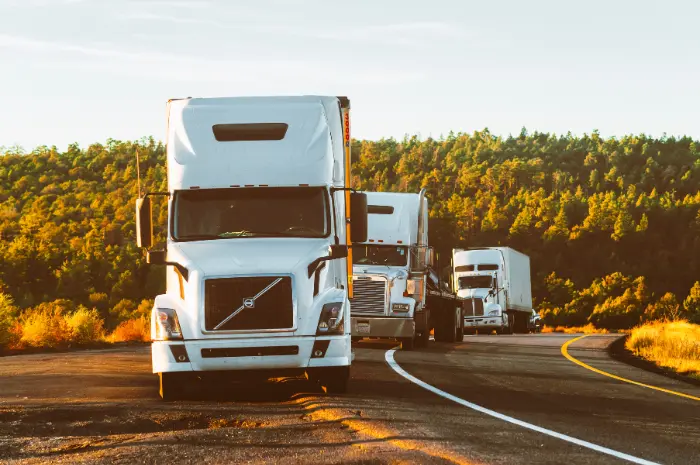Transportation applications have become an integral part of our lives, revolutionizing the way we navigate through urban cities. With real-time information and user-friendly interfaces, apps like Transit have made commuting easier and more convenient. If you’re interested in developing a transportation app like Transit, this comprehensive guide will provide you with all the insights and steps required to embark on this journey.
Transportation apps have become an integral part of our lives, revolutionizing the way we navigate through urban cities. With real-time information and user-friendly interfaces, apps like Transit have made commuting easier and more convenient. If you’re interested in developing a transportation app like Transit, this comprehensive guide will provide you with all the insights and steps required to embark on this journey.
Understanding the Need for Transportation Apps
In today’s hectic world, where every second counts, transportation apps have become a necessity. These apps provide real-time information about buses, trains, subways, and other modes of public transportation, enabling users to plan their journeys efficiently. By offering seamless access to live whereabouts of vehicles, transportation apps like Transit have transformed the way we navigate our cities.
Exploring the Features of Transit App
Transit App, launched in 2012, has gained a distinguished reputation for its exceptional provision of real-time public transit information. With coverage in over 175 cities worldwide, this app has a user-friendly interface that simplifies the commuting process. Users can enter their departure and arrival locations, along with their preferred time, to seamlessly navigate to their desired destination. With features like GPS tracking and offline routes, Transit App ensures punctuality and convenience for its users.
Benefits of Transportation App Development
Investing in transportation app development offers numerous benefits for both customers and businesses. Some of the key advantages include:
- Enhanced Efficiency: Transportation apps automate key processes like order management and route optimization, leading to cost savings and quicker delivery times.
- Real-Time Tracking: Customers and logistics managers can track shipments and vehicles in real-time, fostering trust and reducing customer complaints.
- Optimized Routes: GPS technology integrated into transportation apps can optimize routes, reduce fuel consumption, and eliminate delivery delays.
- Paperless Documentation: Mobile apps eliminate the need for paper documents, making it easier to organize and preserve essential records.
- Improved Communication: Transportation apps facilitate instant communication between drivers, dispatchers, and customers, enhancing overall efficiency.
- Data Analytics: Mobile apps can collect and analyze data, providing valuable insights for informed decision-making and continuous improvement.
- Customer Engagement: Dedicated transportation apps allow customers to place orders, track shipments, and receive notifications directly, enhancing customer satisfaction.
- Competitive Advantage: Having a mobile app sets your business apart from competitors, showcasing your commitment to innovation and customer service.
- Cost Reduction: Over time, transportation apps can significantly reduce operational costs, from fuel savings to reduced administrative expenses.
- Scalability: Transportation apps can easily scale as your business expands, accommodating new features and functionalities to meet evolving needs.
Steps to Build a Transportation App Like Transit
Developing a transportation app requires careful planning and execution. Here are the key steps involved in building a transportation app like Transit:
1. Market Research and Analysis
Before diving into app development, conduct thorough market research and analysis. Identify the needs of your target audience and analyze the features and functionality of existing transportation apps. This research will help you understand user preferences and identify gaps in the market.
2. Define App Functionality and Features
Based on your research, create a list of features and functionalities that you want to include in your transportation app. Consider features like real-time tracking, route planning, push notifications, ticket booking, and integration with third-party services. Define the user interface and user experience to ensure a seamless and intuitive app design.
3. Choose the Right Technology Stack
Selecting the right technology stack is crucial for app development. Consider the platforms you want to target (iOS, Android, or both) and choose the appropriate programming languages and frameworks. Swift and Objective-C are commonly used for iOS development, while Java and Kotlin are popular for Android development.
4. Wireframing and Designing
Create wireframes and prototypes to visualize the app’s functionality and layout. Design a user-friendly interface that aligns with your branding and ensures an intuitive user experience. Pay attention to factors like color schemes, typography, and overall aesthetics to create an appealing app design.
5. Development
The development phase involves coding and building the app’s backend and frontend. Implement the defined features and functionality, ensuring seamless integration with APIs for real-time data. Conduct regular testing to identify and fix any bugs or issues that may arise during development.
6. Testing
Thoroughly test your transportation app to ensure its functionality, performance, and security. Test all features and scenarios, including real-time tracking, ticket booking, and push notifications. Conduct both manual and automated testing to identify and resolve any issues before launching the app.
7. Launching and Maintenance
Once your transportation app is developed and tested, it’s time to launch it on the app stores. Prepare marketing strategies to promote your app and attract users. Continuously monitor and maintain your app to ensure its smooth operation, address user feedback, and implement updates and improvements.
Cost to Build a Transportation App Like Transit
The cost of building a transportation app like Transit depends on various factors, including app design, development, features, and integrations. On average, the cost ranges from $25,000 to $40,000 for a basic transportation app. However, the complexity and customization requirements can drive the cost higher, potentially exceeding $80,000. It’s essential to consider your specific needs and consult with app development experts to get an accurate estimate.
Conclusion
Transportation apps have revolutionized the way we navigate our cities, providing real-time information and seamless travel experiences. Developing a transportation app like Transit requires careful planning, market research, and efficient execution. By incorporating features like real-time tracking, optimized routes, and effective communication, you can create an app that enhances efficiency, improves customer satisfaction, and offers a competitive advantage.
With the right technology stack and a dedicated development team, you can bring your transportation app idea to life and contribute to the future of urban mobility.



